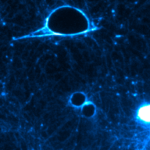Link to Pubmed [PMID] – 19673096
Toxicon 2009 Apr;53(5):503-11
Botulinum neurotoxins induce a prolonged muscle paralysis by specifically blocking the release of neuronal transmitters from peripheral nerve junctions. The current method for assessing the potency of botulinum toxin and antitoxins is the mouse LD50 assay. The mouse phrenic nerve-diaphragm assay is an in vitro assay that closely mimics in vivo respiratory paralysis. In this study, we have further improved the assay by using gelatin as a non-frothing alternative to albumin and investigated the effects of botulinum toxin serotypes A, B and E on phrenic nerve-hemidiaphragms from out-bred MF1 and in-bred Balb/c mice. Improved reproducibility was found with in-bred mice. Balb/c mice were also found to be much less sensitive to type B toxin perhaps indicating differences in the expression of receptor components. Hemidiaphragm preparations from Balb/c mice were approximately 7 times more sensitive to type A toxin and 7-12 times more sensitive to type E toxin relative to type B toxin. These findings indicate that when fully optimised the mouse nerve-diaphragm preparation can provide a functional in vitro model for accurate and reproducible assessment of toxin activity.

